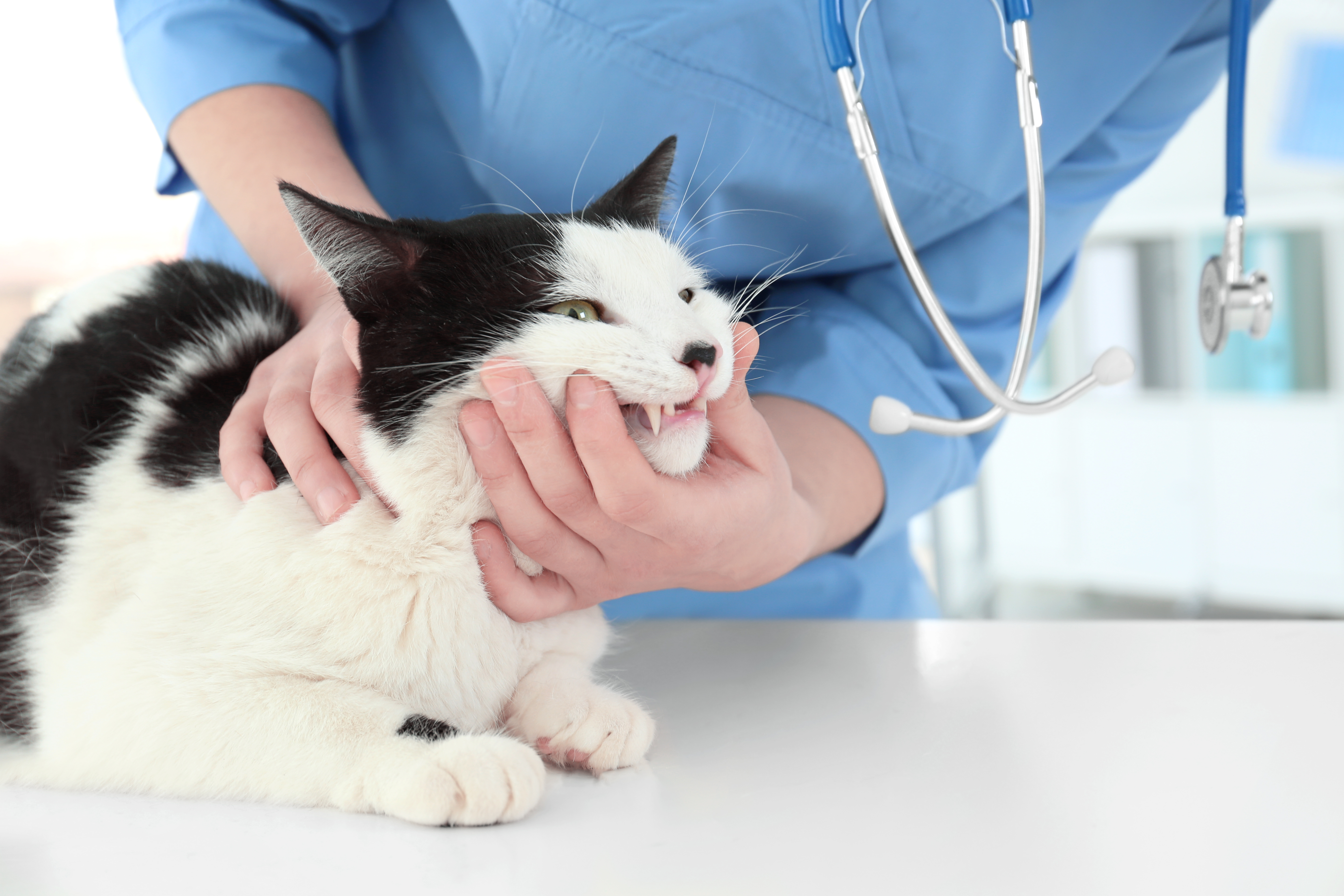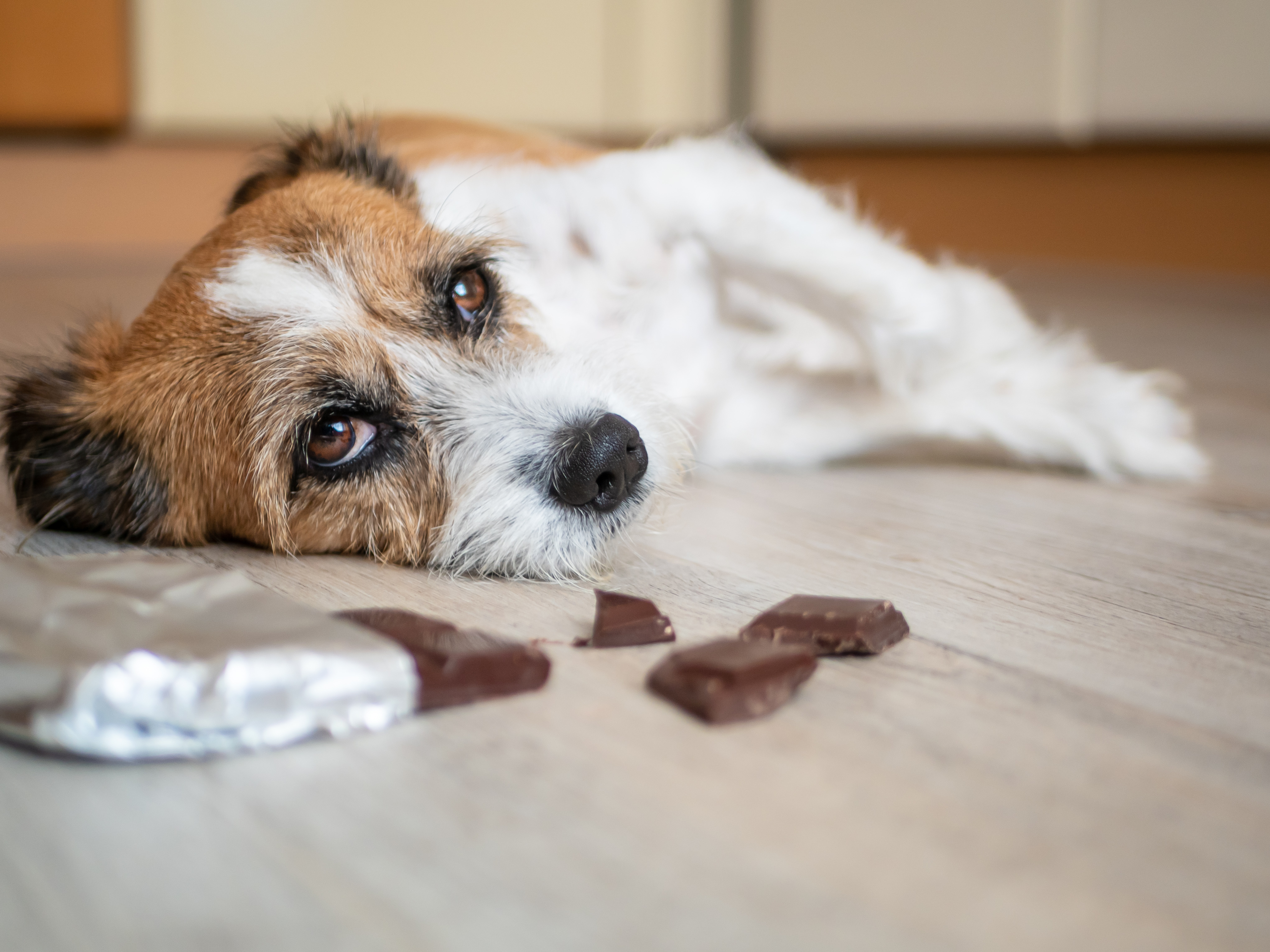Home | Emergency Care | First Aid Treatment of Common Pet Emergencies
First Aid Treatment of Common Pet Emergencies
Keywords:
First Aid Treatment of Common Pet Emergencies
Allergic Reactions:
Don’t panic if whelps (hives) should begin to break out on your pet. This type of allergic reaction is not fatal. It will become uncomfortable to the pet until treated by a veterinarian, but the pet will not die. If swelling occurs around the face or muzzle your pet is experiencing a severe allergic reaction. Your pet will need a series of interventions medications to prevent anaphylactic shock. This type of allergic reaction can be fatal, and immediate treatment should be sought.
Bleeding:
Control bleeding by direct pressure to the wound with your hand or a pressure bandage. Place a gauze pad over the wound and then cover and wrap with an elastic bandage. Place the bandage snug for pressure, but not tight enough to cut off circulation. Although some blood may discolor it, the bandage should be tight enough so that blood does not drip through it. Seek veterinary attention for all cuts through the entire thickness of the skin or that bleed excessively. It is best not to apply any medications. Tincture of Iodine, Peroxide, and most ointments only irritate the wound more and decrease healing. Do not apply cotton to a wound.
Other Resources

We Welcome New Patients!
We're always happy to give your furry friend care at our hospital. Get in touch today!
Contact UsBurns:
Immerse the affected part in cold water. Keep ice on the area as much as possible. Do not apply any type medication until veterinary attention is obtained if the burn appears severe. The major complication is infection.
Choking:
Attempt to push the lower jaw open and tilt the head up. Using extreme caution try to remove any object with the fingers. If unsuccessful, kneel behind the dog, holding its body just below the ribs. Squeeze hard a few times, pressing up. Seek professional veterinary attention if the object does not pop out. Swallowed objects that do not interfere with breathing are not immediate life or death threats. However, a veterinarian should be consulted if it is possible the object was swallowed. Complications are much less when the object can be removed while still in the stomach rather than in the intestine.
Electric Shock:
Remove the source of electricity with a wooden object. Seek veterinary attention since electric shocks will result in fluid buildup in the lungs for several days that can be fatal.
Eye Injuries:
NEVER apply any medication to an eye without seeking veterinary attention first. Many scratches on the surface of the eye are not visible until the eye is treated with a special stain. If the wrong type of ointment is used, such as an ointment containing cortisone in an injured eye, the condition can be made worse - even to the extent of causing loss of the eye. A “Popped Eyes” can sometimes be reinserted by grasping the upper and lower lids and attempting to pull them out over the eyeball while at the same time gently pushing in on the eye. If this cannot be accomplished, keep the eye moist with a wet cloth until veterinary assistance can be obtained.
Fishhooks:
Fishhooks must be pushed on through the skin, the barb and point cut off, and then the remainder can be pulled back through the skin the same way it went in. Antibiotics are often needed to prevent infection from the puncture wound.
Fractures:
Fractures are no immediate life or death threats. Stabilize the limb with a stick, rolled newspaper, etc., wrapped loosely with gauze. Do not wrap tightly because of swelling that will occur.
Heat Stroke:
Early signs include panting, high fever (105-108 degrees Fahrenheit), shock, and collapse. Lower the body temperature by hosing or immersing in cold water up to the neck. Apply ice packs to the head - very important to prevent brain damage. Contact Your Vet ASAP.
Poisoning (External):
Most signs will involve the nervous system including such things as trembling, nervousness, salivation, pupil constriction, or dilation, and convulsions or coma. Wash the skin in a mild soap, such as Ivory. Rinse and repeat. Seek veterinary attention BEFORE signs develop. Take a description of the poison to the veterinarian for identification.
Poisoning (Internal):
Read the label of the product for instructions. Do not induce vomiting of some poisons, such as caustic chemicals, acids, alkalis, and petroleum products. Most other cases require vomiting to rid as much of the chemical as possible from the stomach. Call Your Vet.
Seizures:
There are many causes of seizures including low blood sugar, epilepsy, distemper, diabetes, and heart failure. The dog will NOT swallow his tongue - do not put your fingers in his mouth. Keep him warm, place him in an area where he cannot injure himself, and seek veterinary attention. Young puppies should be given a teaspoon of honey or other source of sugar. Do NOT give sugar to older pets if there is a possibility of diabetes.
Shock:
Signs of shock include depression, decreased body temperature, and grayish gums. Keep the pet as quiet as possible, keep it warm, and seek veterinary attention immediately
Key Points:
Stool samples should always be examined by the veterinarian to determine the cause if diarrhea exists for more than 24 hours.
The major cause of gastric upset in the dog is dietary changes. All changes should be gradual.
Tylenol will kill dogs and cats.
Aspirin will often cause gastric ulcers. Use only the enteric coated types. (Ascriptin AD)
More damage is done to wounds by applying medication than would be present if nothing had been applied. All topical medications retard healing to some extent.
Other Resources

We Welcome New Patients!
We're always happy to give your furry friend care at our hospital. Get in touch today!
Contact UsTips and Advice From Our Team
Looking for advice about caring for your pet? Our blog features helpful tips and educational material from our team to support your needs.



